From the Skeleton Coast, we drive inland. We visit a petrified forest.
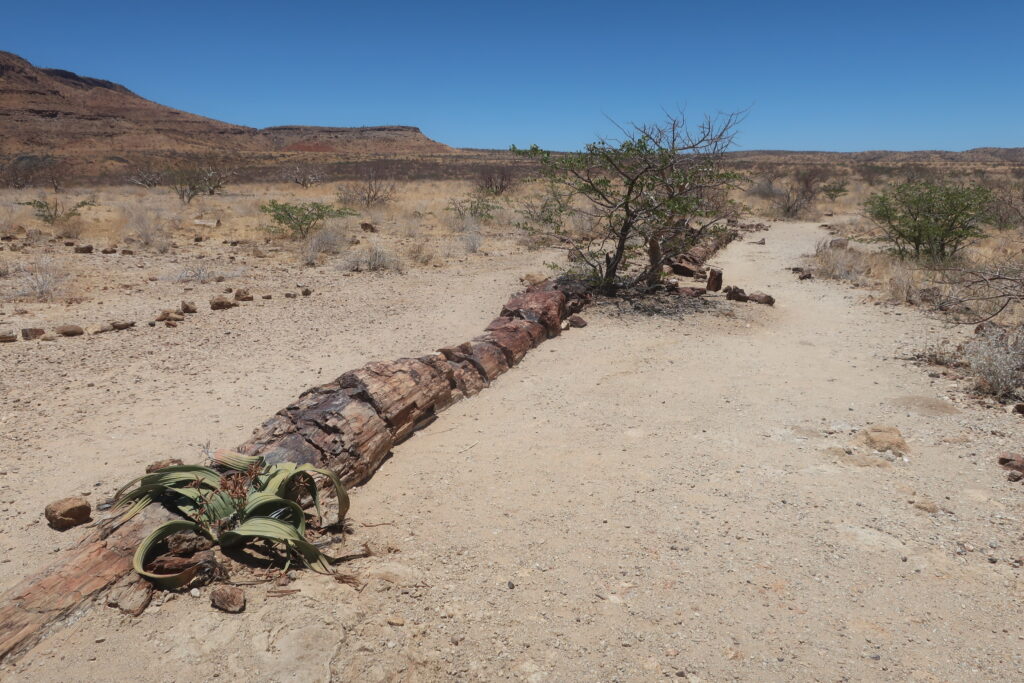
Nearby is the UNESCO-listed site of the Twyfelfontein cave engravings.

Our guide, Harold, is very knowledgeable and well-spoken. He says ‘Indeed!’ a lot.
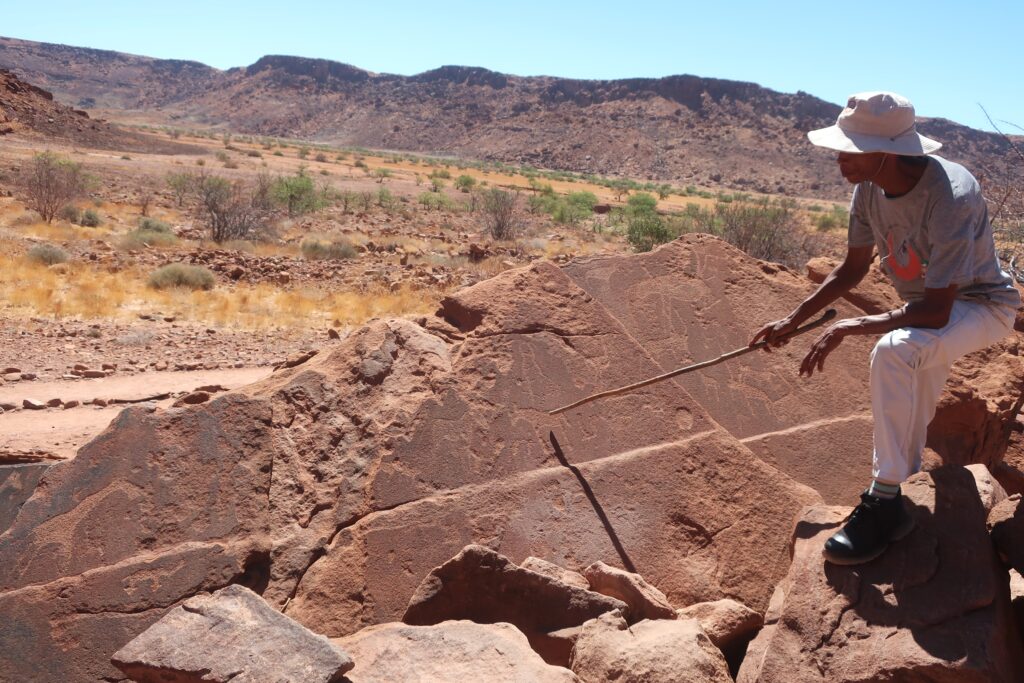
This is a puff adder sleeping between some boulders. They’re extremely poisonous.
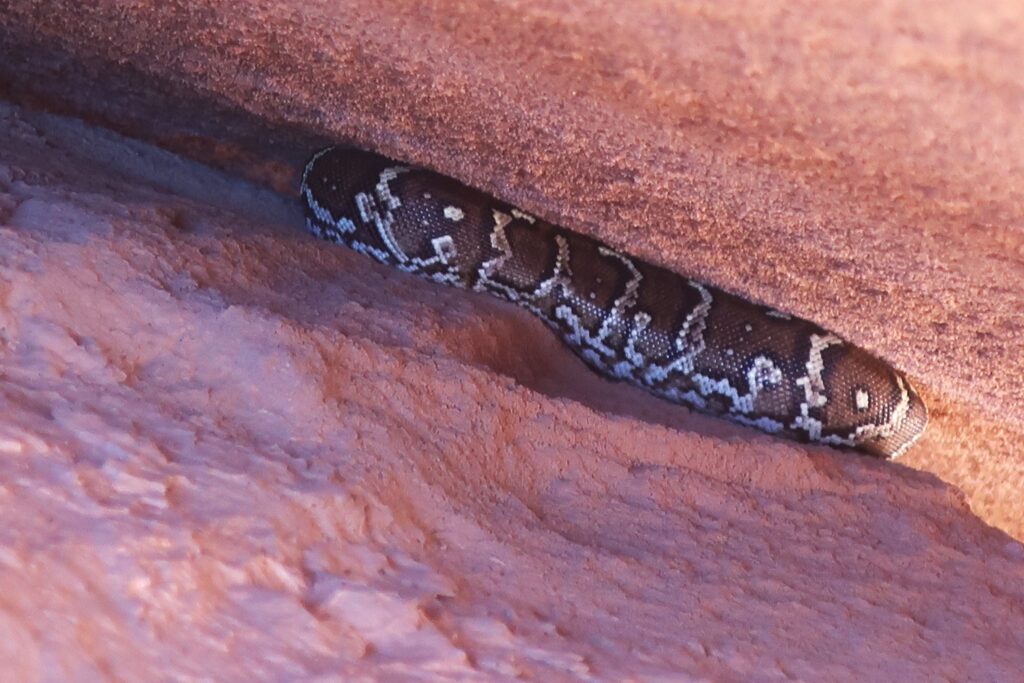
The next day, we visit another cultural relic, the cave paintings in the Brandberg mountains.
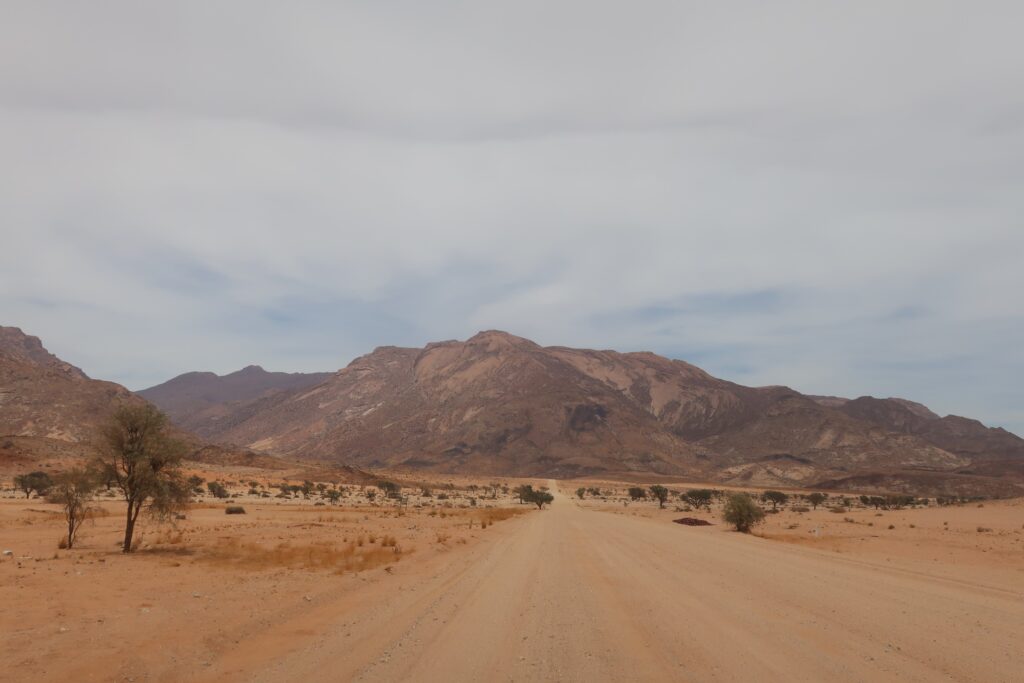
We have to hike a few kilometres in the company of a guide to get here.
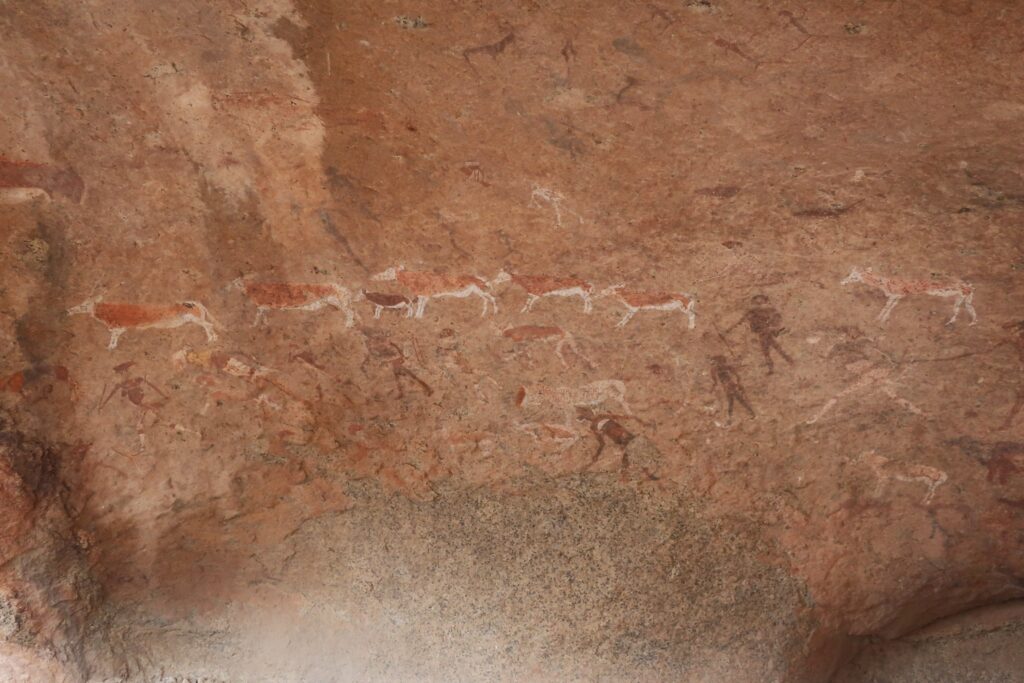
Among the figures on display are the ‘White Lady‘ who it turns out is actually a man. Possibly.
We end up overnighting in the mining town of Uis, a rough-and-ready place with a tin mine on the outskirts.
After a lightning detour to Windhoek for an obligatory vehicle inspection, it’s back up north.
Near Outjo, we stay at the luxurious Sophienhof Lodge. (Just camping, of course.) There is a wild female ostrich that casually walks around the grounds.
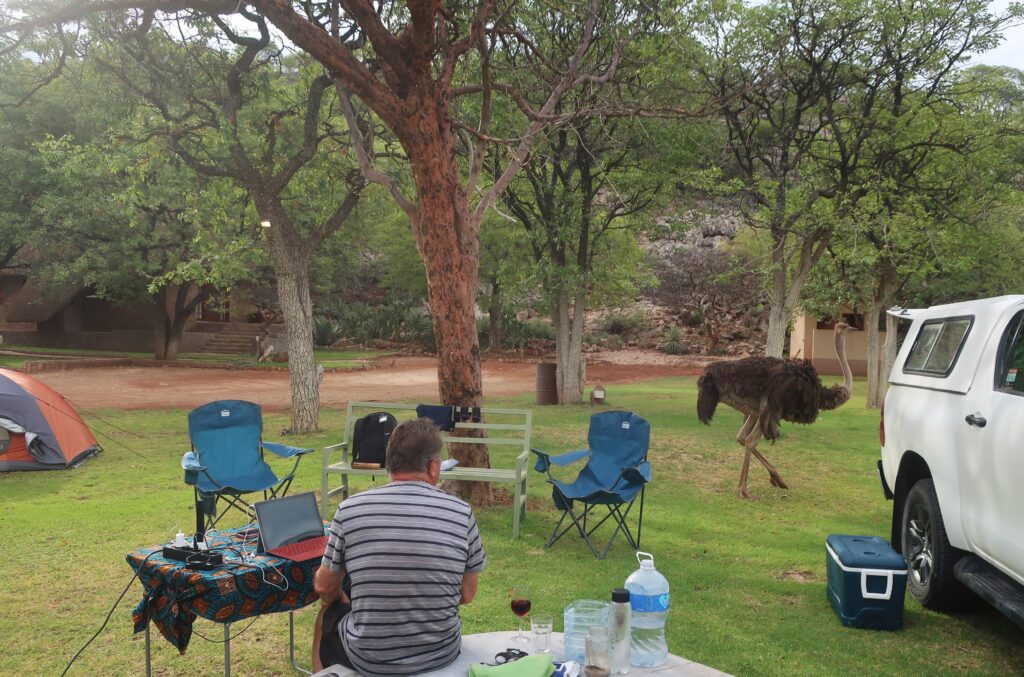

We plan to spend Christmas in Etosha National Park. When we first arrive in the district, we stay at the Etosha Trading Post. It’s close to the Etosha’s main gate leading to Okaukuejo, the park HQ. In the park itself, we also stay in Namutoni (with its cool German fort), Halali, and Olifantsrus (about which see below.)

On our first day in the park, we are lucky to see some lions. This big male is guarding an eviscerated zebra carcass.
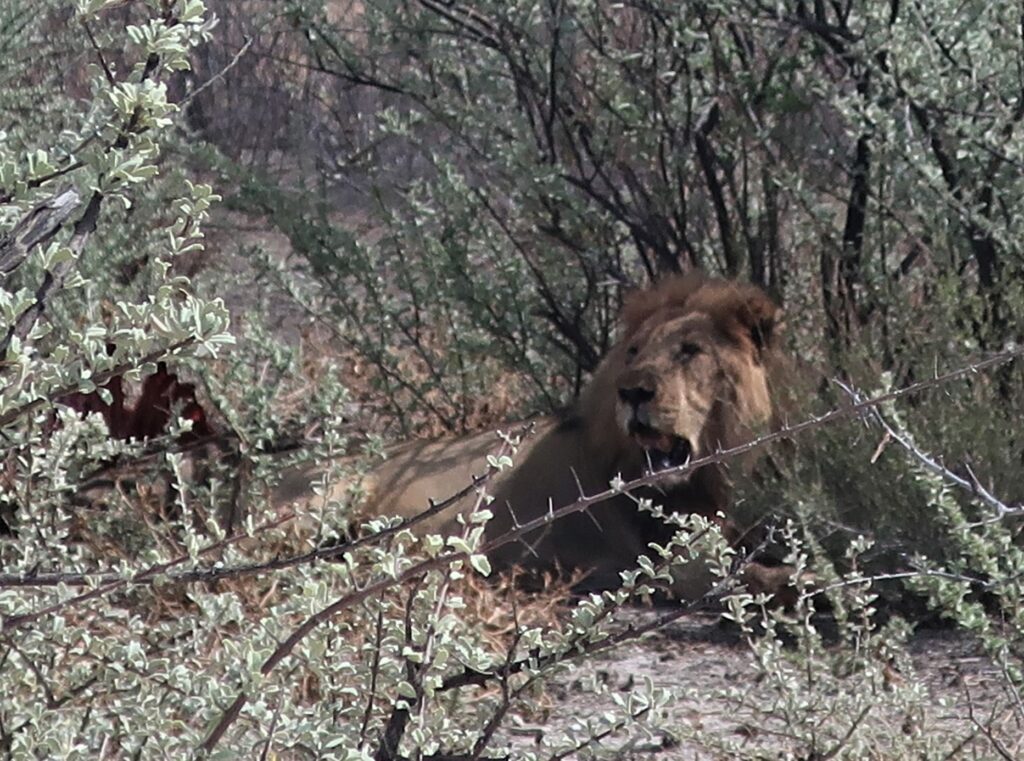
At Maria’s insistence, I’m inserting a photo of the eviscerated zebra carcass.

Some lionesses are nearby.
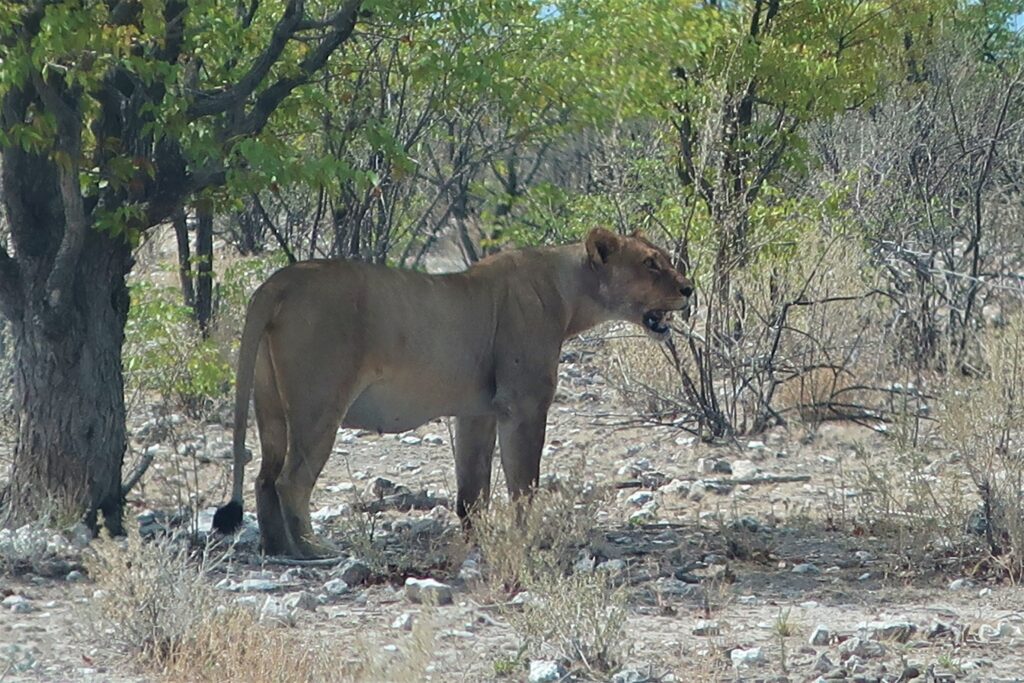
You can see how close we are.
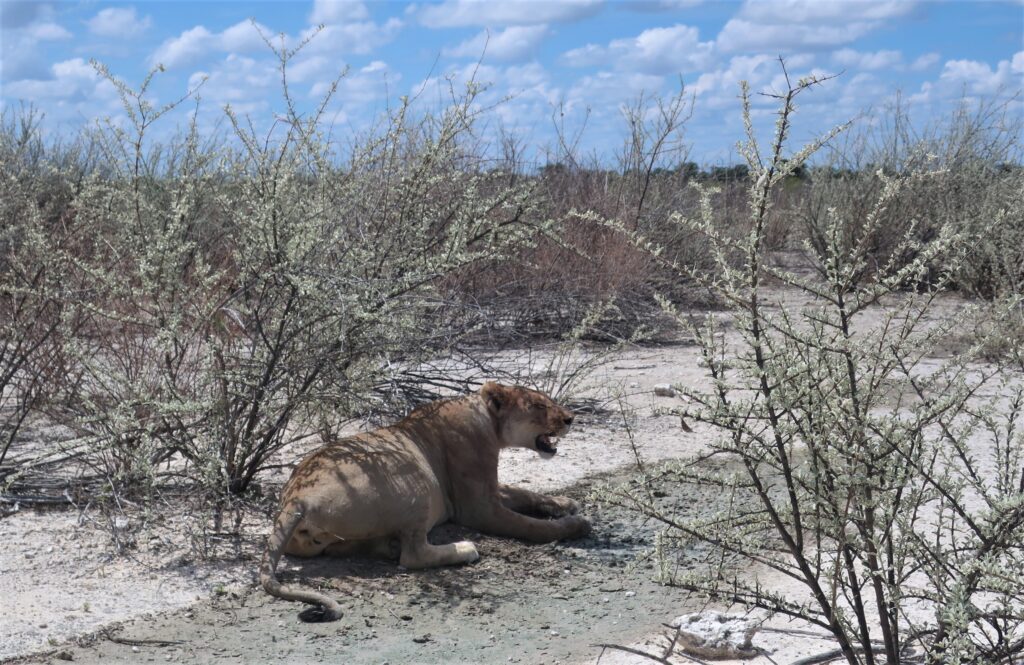
One benefit of the recent rainstorm – the roads in the park are full of puddles that are fun to drive through in a high 4X4 vehicle.
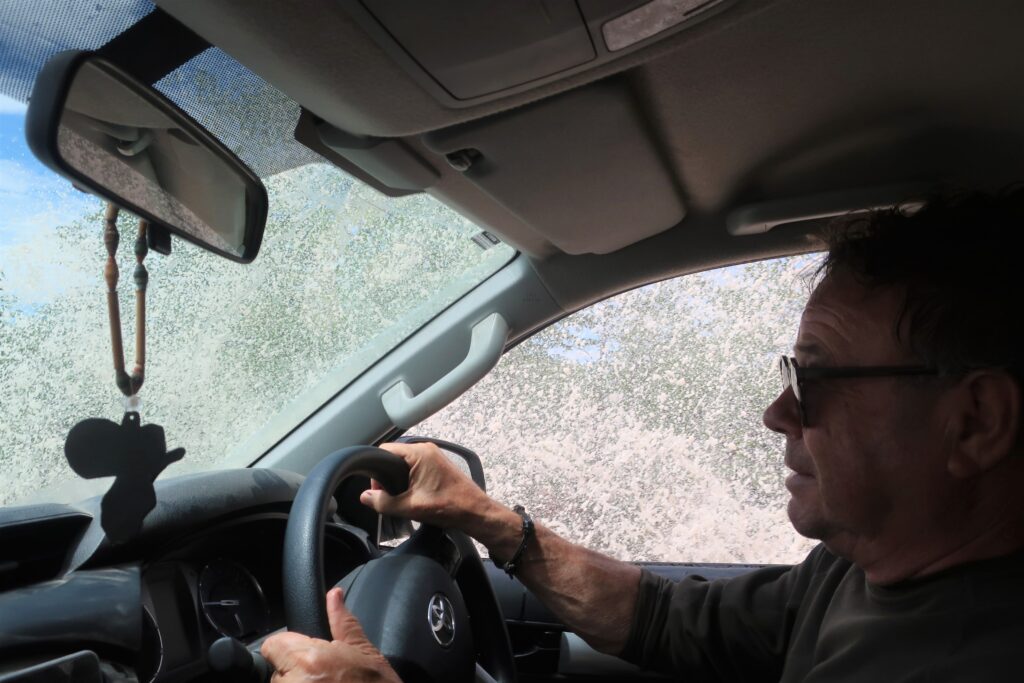
We are really lucky to have a close encounter with a rhinoceros.
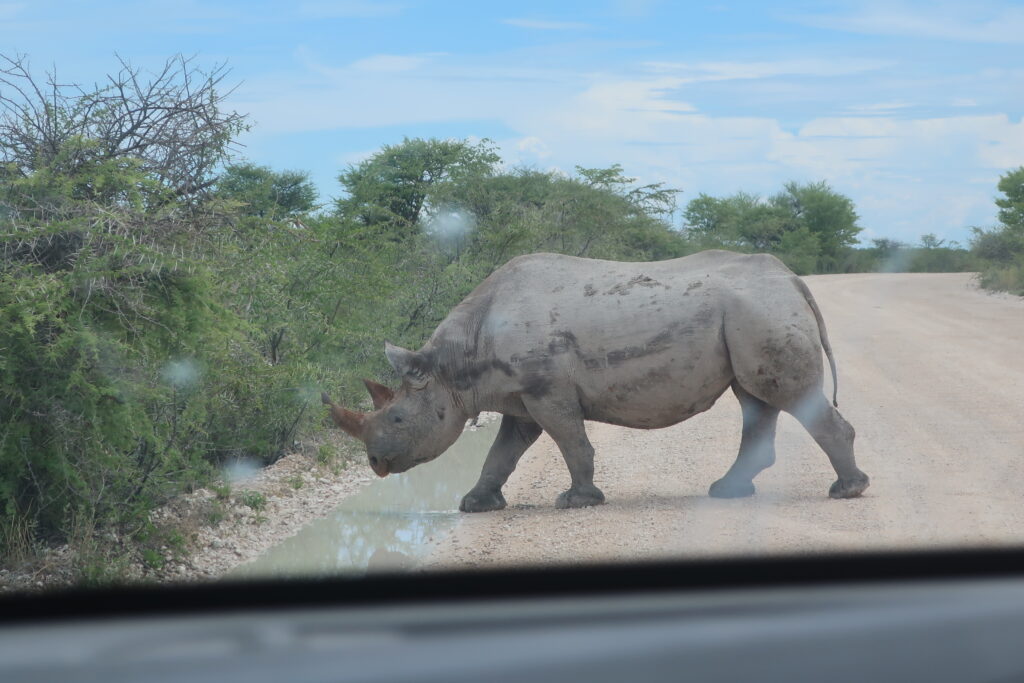
It really feels like being up close and personal with a dinosaur.
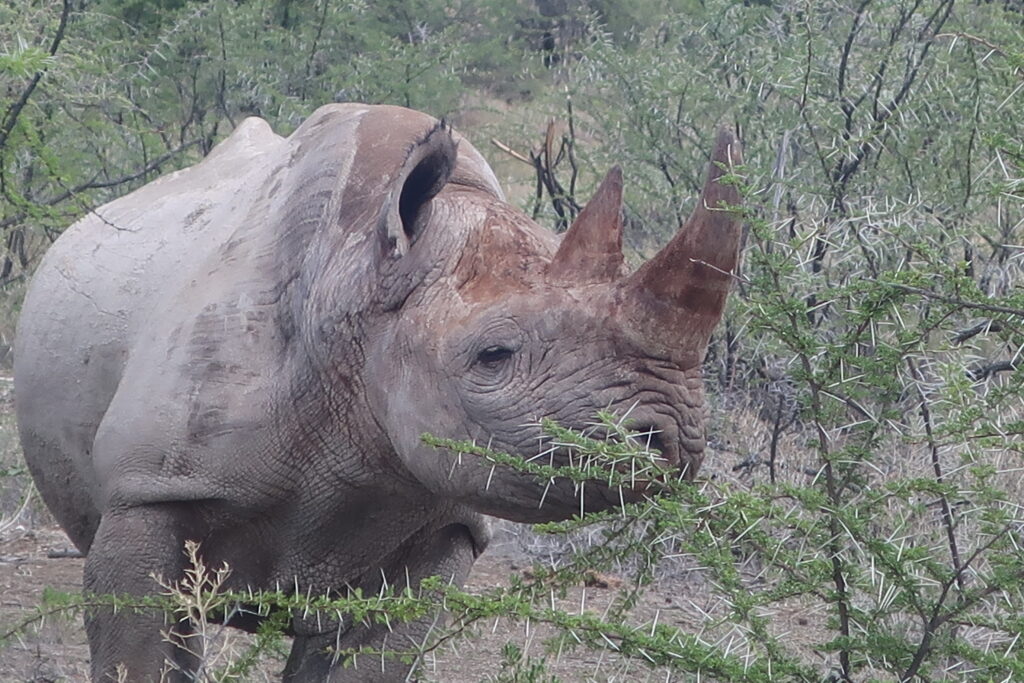
I ask Maria to take a lot of photos – these creatures could become extinct in our (dwindling) lifetime.
We always get a kick out of seeing elephants.
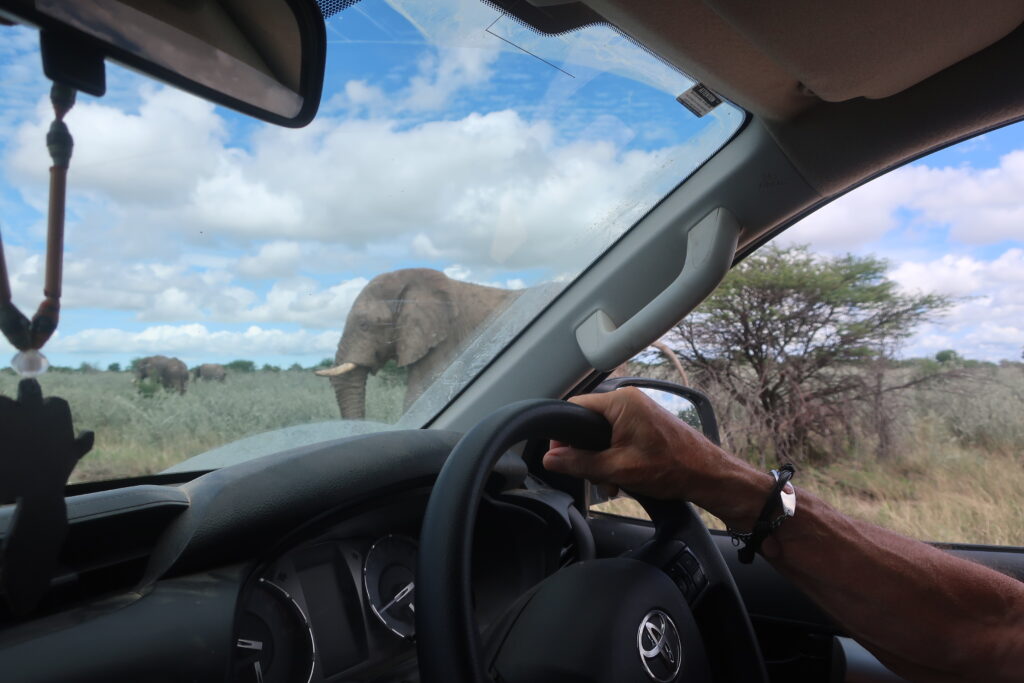

We see lots of other wildlife in the park – zebras, giraffes, many kinds of antelope, a hyena – but it’s more of a thrill to see them in the flesh rather than in repeated photos. So we limit ourselves to a few good examples.
For some reason, the local moths go berserk over wine. We have to put some in a plate to keep them from harassing us.
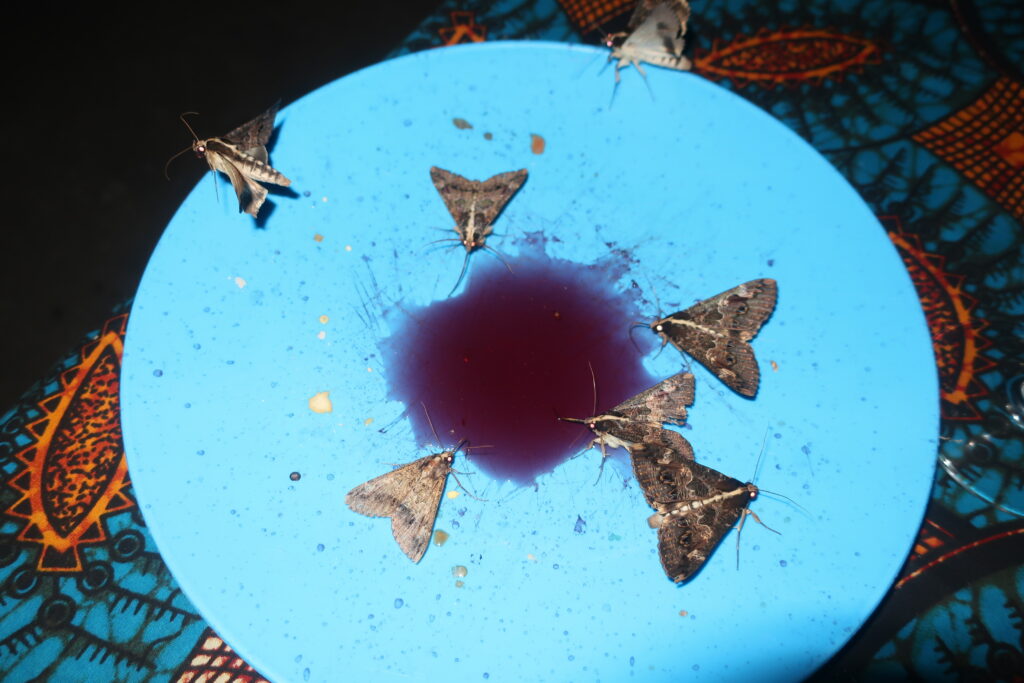
There are giant termite mounds everywhere. Often they envelope a tree tunk.
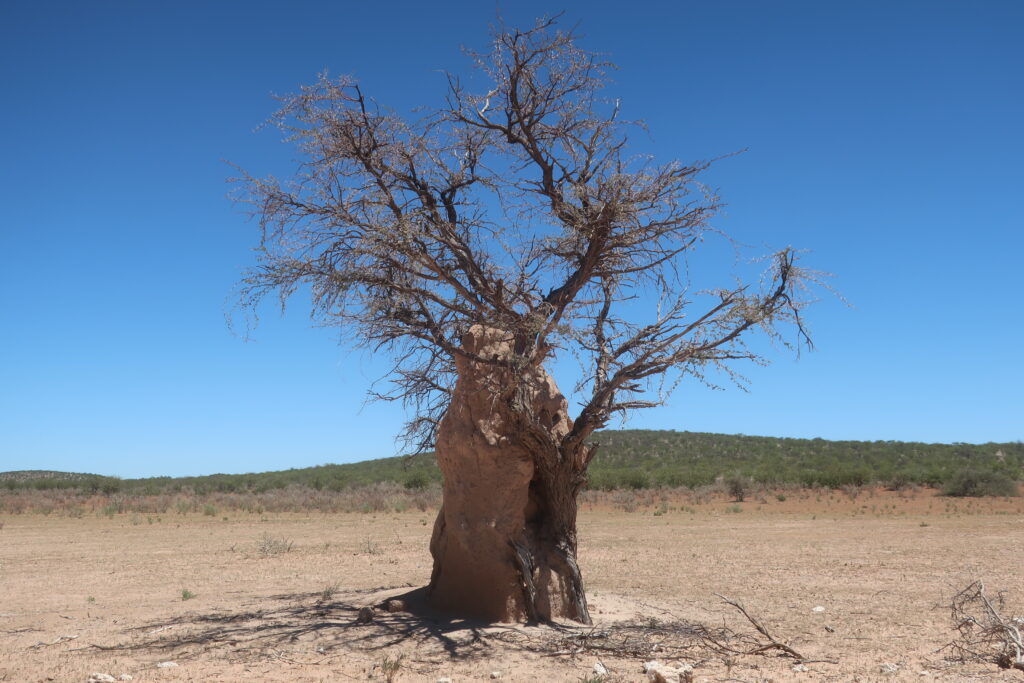
Our last campsite in Etosha is Olifantsrus. It has a wonderfully designed waterhole observing platform.
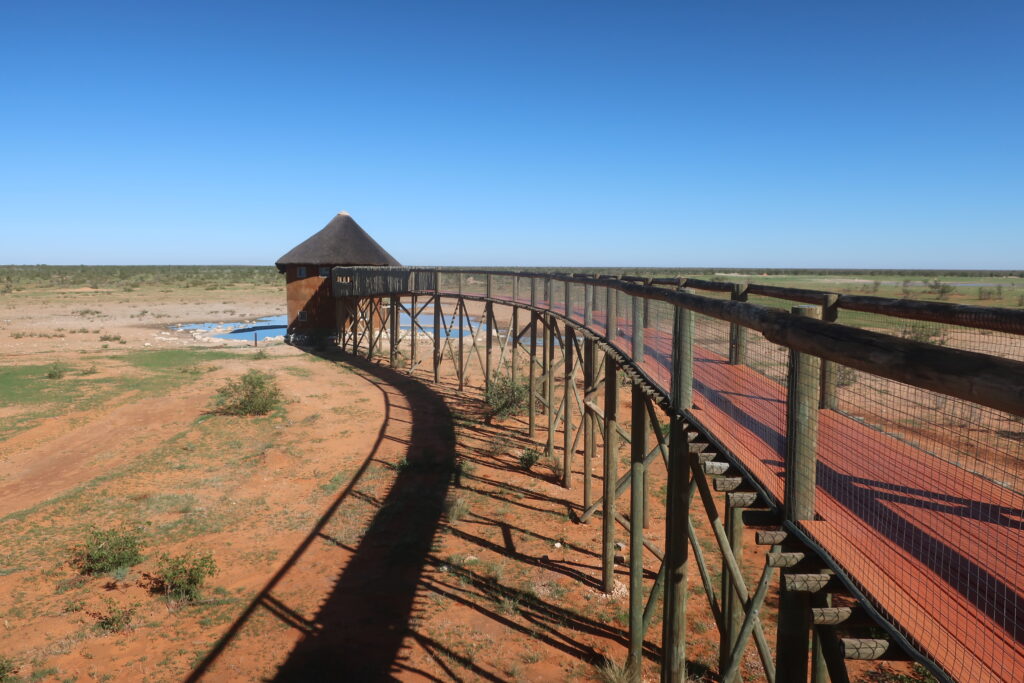
It’s the most austere of the Etosha accommodation options. Remote. 10 Campsites only. No shop, no curio stalls. We love it.
Sight or Insight of the Day
Olifantsrus – which means ”elephant’s rest'” in Afrikaans – is ironically named. This was the site of an outdoor elephant abattoir between 1983 and 1985.
Over 500 elephants were butchered here. It reminds me of abandoned whaling stations. There is the same haunting sense of vast amounts of blood being spilled for dubious human purposes.
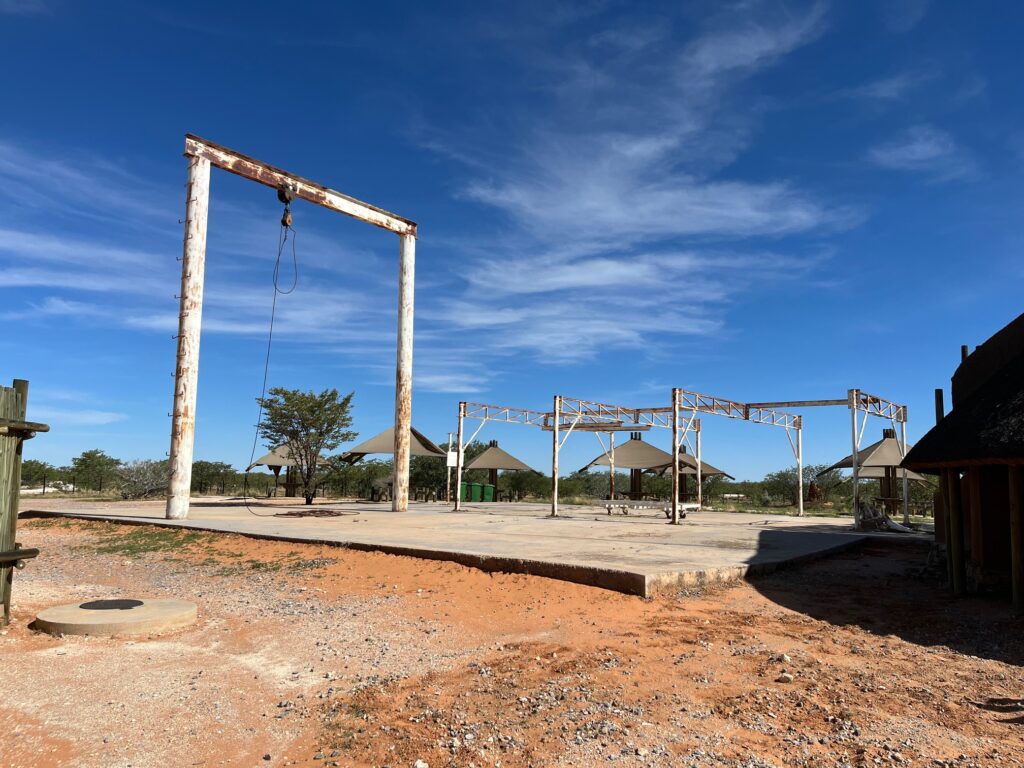
It has an excellent information centre describing the reasons and method for this considerable culling. In short, it was believed the number of elephants in the park at that time was unsustainable.
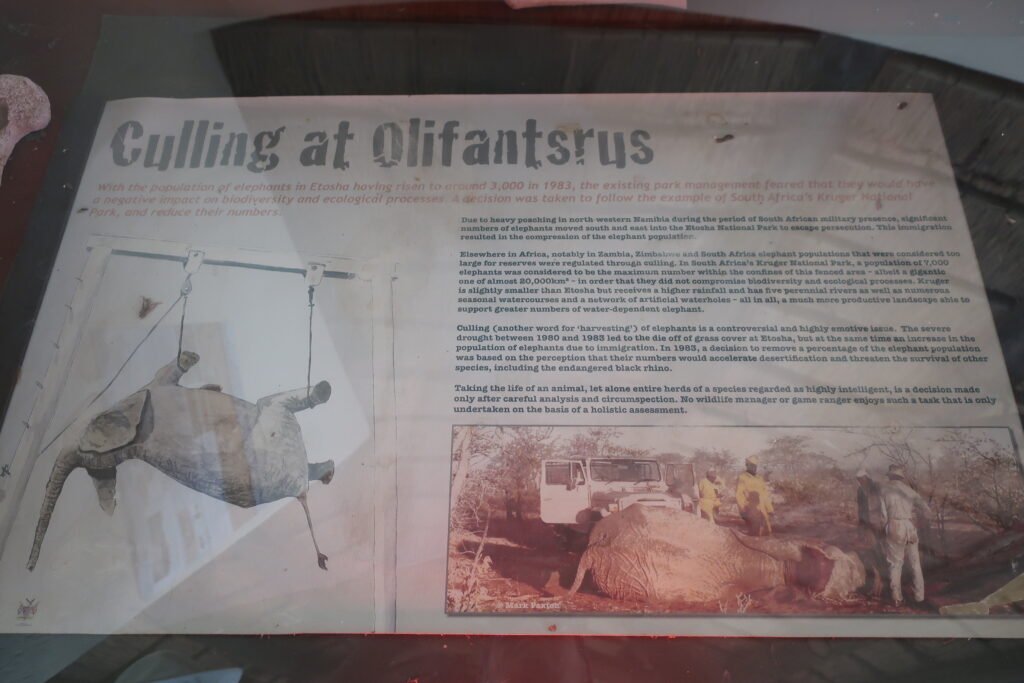
I was hoping to find the entire text online somewhere, but no such luck. One excerpt:
‘Taking the life of an animal, let alone entire herds of a species regarded as highly intelligent, is a decision made only after careful analysis and circumspection.’
According to this info, three conditions were strictly adhered to:
- Entire elephant herds (family units) had to be dispatched rapidly, in order that there be as little disturbance and trauma as possible for surrounding elephants.
- Optimum utilization of all elephant body parts was essential.
- As much scientific data as possible must be obtained from the culled elephants.
